Have you ever asked yourself how come ferrets are domesticated?
They are very popular today as pets, but what about the ferret history?
I wondered the same thing and that is why I made a research about that. I have found answers to many questions that include: Where are they from? How long are they among us? For what were they bred? I can really say that their history is actually extremely interesting and somewhat mysterious.
TABLE OF CONTENTS
Who Are Ferret Ancestors?
The moment you dive into ferret history, you will be amazed. It is a pretty mysterious history and we can’t even say with 100% certainty their real origin. There are three main theories, every theory is located on one continent. There is one that is more probable than the other two. Now, I don’t want to keep you waiting, let’s check out those theories!
European Polecat Theory
The first theory and the most probable one is that ferret’s ancestors are European polecats. There are two types of polecats, the Western or European polecat, and the Steppe or Siberian polecat. As you can see by their names, they are located in (western) Europe and (eastern) Europe to China. Their Latin names are Mustela putorious and Mustela eversmannii. A ferret’s Latin name is Mustela putorious furo so we can see that this is the theory accepted all over the world. Ferrets belong in the genus Mustela, in the family Mustelidae. There are over 60 species of weasels, stoats, badgers, skunks, minks, and otters in that family. Also, we can breed ferrets with polecats and have healthy kin.
 Photo Source: Earlham Institute
Photo Source: Earlham Institute
Northern African Theory
The second theory is actually connected to the first one. This means that European polecat actually descends from a North African lineage of the species. Thanks to many DNA analyses, we learned that ferrets were domesticated around 2,500 years ago. What is interesting is that there is a possibility that ancient Egyptians were the ones who made the first contact with wild animals. They probably used them for hunting other smaller animals. But, this remains a theory because there isn’t any evidence that ferret was around at that time. There aren’t any drawings, any remains, or any knowledge of wild polecats in that area.
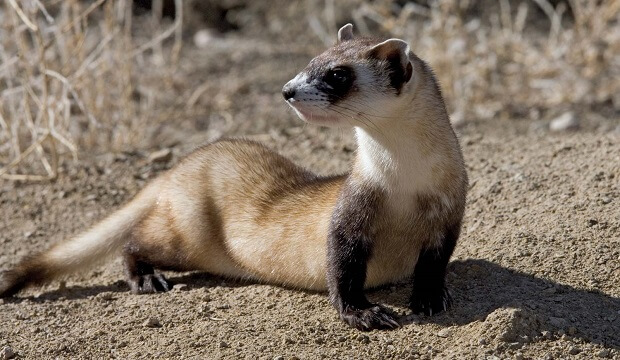 Photo Source: Britannica – Ryan Hagerty—NCTC Image Library /U.S. Fish and Wildlife Service
Photo Source: Britannica – Ryan Hagerty—NCTC Image Library /U.S. Fish and Wildlife Service
North American Theory
The last theory of ferret domestication is located in North America. That theory says that ferrets’ ancestors are connected to Black-footed ferrets. This is the weakest theory because after extensive research it was proven that those animals don’t have that much in common. The biggest difference is in their physical structure. Our pet ferrets have a similar structure to European polecats, not to Black-footed ferrets. Besides physical differences, there are also different genetic characteristics so we can scratch the North American theory. But, if you want to learn more about Black-footed ferrets, read my post about them!
Why Would Someone Domesticate Ferrets?
The main reason to domesticate ferrets was to prevent expanding rats, mice, and rabbits. Throughout history, they were considered pests and most wild ones are considered that today too. Those pests chewed and damaged crops so people needed something to stop them and prevent them from doing it in the future. Now, you probably think what about cats or dogs? Well, they were too big to follow rats and mice in narrow spaces so humans needed to find other solutions – this is where ferret history among us begins. It all started around 2500 years ago.
First Documented Ferret
One of the first documents in ferret history that mentioned some ferret-like animal was in Ancient Greece in 450 BC. There are a few documents Aristophanes and Aristotle wrote in 350 BC too, but most of them were destroyed so it is unclear. The important person who mentioned ferrets is Strabo. He wrote about rabbit overpopulation on the Balearic Islands that caused famine.
 Photo Source: Wikipedia
Photo Source: Wikipedia
People had to get rid of rabbits and they used a “Libyan animal” for hunting. Those ferret-like animals were wild so people didn’t have interaction with them, they muzzled the animals and released them in rabbit holes. Rabbit frightened by that small but furious animal would run out of the tunnel and people with dogs did the rest. Sounds familiar? The same method is using today in some countries to hunt rabbits.
Agile Little Hunters
Since then, ferrets were mentioned a few more times in ancient documentation. As time passed, they were mentioned more and more as people realized they can use them for hunting, but in households too. You could say that ferrets were working animals made for the lower or middle class to keep the pests away. With that in mind, their popularity grew every day.
 Photo Source: Wikimedia Commons
Photo Source: Wikimedia Commons
Europe Many Years Later
In 1200 ferrets spread to Germany and to England. In England, church officials held ferrets because of their high price. You couldn’t own a ferret if you didn’t have an annual income of 40 shillings. You can say that ferrets moved from a lower class to a high class. But, their purpose stayed the same. People used ferrets for… Well, hunting rats and rabbits.
First Albino Ferret
The interesting fact is that the first albino ferret was documented also in Europe, to be more exact, in Zürich. In 1551, Gerner wrote a document that says that the color of the albino ferret looks like ”the color of wool stained with urine”. Since that vivid description, we can find more and more ferrets in history books.
Ferret History Travels On Ships
People realized that ferrets are extremely useful so they started to carry them around with them. On ships, ferrets eventually replaced cats and dogs (for the same reason as earlier in the paragraph above – they can fit in narrow spaces). Dogs weren’t good because they were barking and cats decided to catch mice when they felt like it. Due to the ferret’s crazy personality and fast body, people kept them as rodent protection, but also as pets. Who wouldn’t want to have a crazy little furbaby in the cabin? With spreading on ships, ferrets conquered every part of the world.
Ferret History In America
This is the part where we can see that ferret domestication wasn’t in America. Domesticated ferrets came to America by ship in the 18th century, which was much later than their actual domestication. They were our little helpers on the ships and they continue doing their job on the land too. Americans realized that ferrets are extremely useful so they imported as many ferrets as they could during the next few decades. They used them to hunt rats and rabbits, but also raccoons. They loved their distinctive smell, because the moment one rodent smelled ferret, it ran away.
Professional Ferret Handlers
You didn’t have to own a ferret if you didn’t want one. Due to their popularity, there were professional “ferretmeisters” who would come to your farm with ferrets if you had a pest problem. They traveled from one farm to the other and providing service for a certain price. Ferrets chased pests out of their shelter and dogs and men caught them, just like in ancient times. But, with the development of industry, chemicals against rodents were invented and there was no need for ferret terminator teams, so they eventually stopped working.
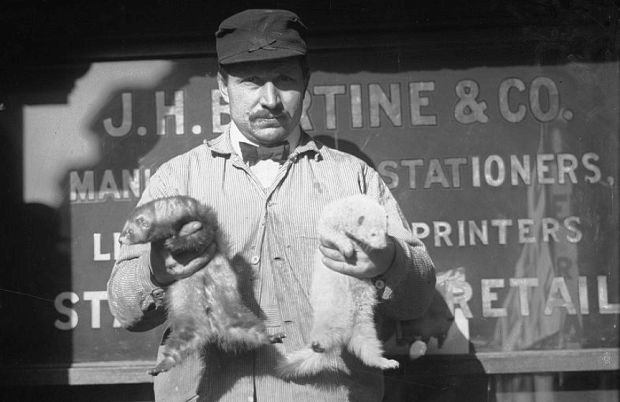 Photo Source: Library Of Congress
Photo Source: Library Of Congress
Ferret History in New Zealand
New Zealand is the place in ferret history where they directly influenced nature among us. But, it all started a few years before the ferret’s arrival. In 1860 rabbits came to New Zealand and everything turned upside down. Rabbits took over the wildlife in New Zealand because they didn’t have any natural enemies. People needed to find a solution. About 20 years later they released thousands of ferrets and weasels to hunt down rabbits.
Wild Ferret Colony Appeared
New Zealand’s climate is perfect for ferrets so that is the only place there is a wild colony of ferrets. The same reason why rabbits took over New Zealand, ferrets took it over too around 1900. Ferrets didn’t have a natural enemy, except humans. Those ferrets did hunt rabbits, but they also hunted birds of New Zealand and most of them can’t fly. Unfortunately, ferrets and weasels contributed to many birds’ decline, even extinction due to overhunting. Interestingly enough, New Zealand is the only place in the world where there are wild ferrets, and keeping a ferret is illegal.

Ferret History in Australia
The same story in the history of ferrets is in Australia at a similar time. Rabbits came to Australia, made a mess and ferrets came a few years later to control their number. But, since Australia’s climate is more unfavorable for ferrets and they have predators who would eat ferrets like foxes, feral cats, and dingos, they didn’t establish wild colonies there.
Ferrets As Working Animals
With the development of chemical repellents and other means of reducing pests, we didn’t need ferrets anymore. But, their specific body type, their speed, and love for small and tight spaces gave ferrets other jobs.
Transporting Cables
Ferrets were a perfect candidate for cable transport in long pipes. They worked alongside humans in telephone companies, covering many events on television, they were even companions to oilmen in the North Sea. All you had to do was attach a cable to a ferret’s harness and release it in the pipe. A ferret will run through the pipe and end up on the other end in a short time. But, with the mechanization, machines replaced ferrets and they were once more unemployed.
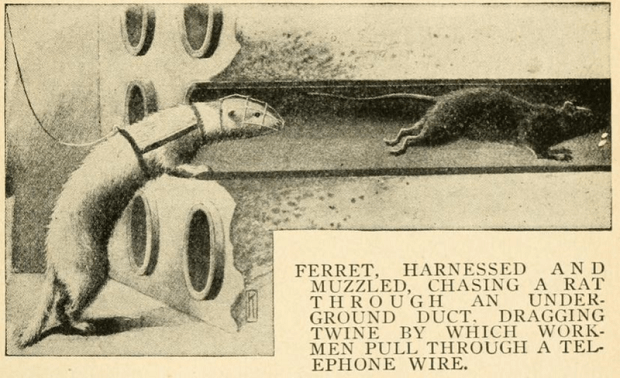 Photo Source: Wikimedia Commons
Photo Source: Wikimedia Commons
Ferret Legging
I am not sure I can call this a job, but it was a rather odd activity you could do with a ferret in England. Only the bravest and the most stubborn men played it in English pubs. The game is pretty simple, but I don’t think anyone would want to play it again. For that game, they needed ferrets and few strings. A competitor tied strings on the end of his pants (both legs) and then someone would release ferrets down his pants. The man who can stay the longest with ferrets down his pants is the winner. The record-holder is from Yorkshire and he had ferrets in his pants for more than 5 hours.
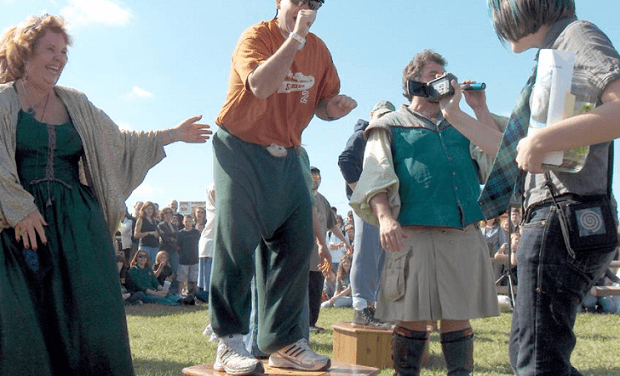 Photo Source: Yorkunion
Photo Source: Yorkunion
Fur Production
Unfortunately, ferrets were popular for centuries in the fur industry in Europe. For a short period of time, this practice was popular in the USA around the beginning of the 20th century. Their dark color was attractive which lead to extensive breeding too. But, with time, the fur industry in the USA eventually died out.
Conclusion:
Ferret’s history is extremely interesting and extremely rich. You can see that in those 2,500 years since ferret domestication many things happened. I am particularly amazed by their progression from basic hunters to cable transporters and eventually, our beloved pets.
Sources:
Ferret History by Susan Brown, DVM
The Vincent Wildlife Trust
The domestication of the ferret by Clifford Owen in The Domestication and Exploitation of Plants and Animals by Peter J. Ucko and G.W. Dimblebyeds

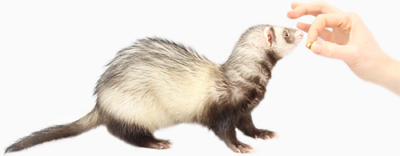


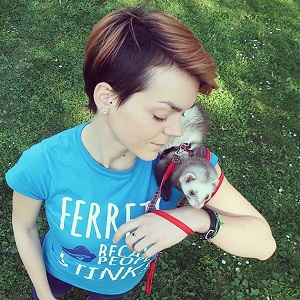

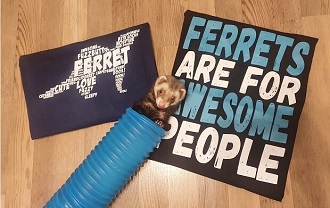






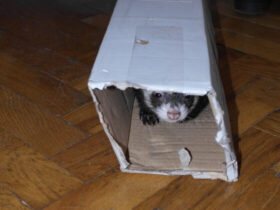



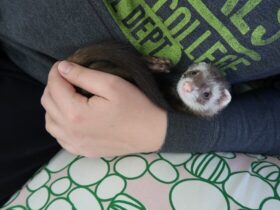


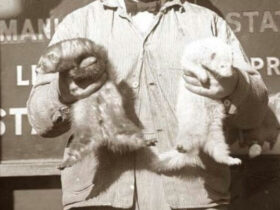


thank you I did know and it was amazing to learn….t know anything about this… Much love to you Frida and Yoda
Thank you Joetta!
Anyone who loves a ferret is blessed! It’s awesome that they were here before Jesus, working to maintain ecological balance in their own little way.
Yes, they are with us for a loooong time! 🙂
Just read this and I want to thank you for it XXX I had a woman say mine should be in the wild and when I tried to tell her a little of the history that I knew she wouldn’t have it XXX so thank you xxx
I am glad I helped you! 🙂
Ferrets belong to the weasel family (Mustelidae), which includes polecats, stoats, and ermines. Domesticated ferrets most likely descend from the European polecat.
That is right Kaydence! 🙂